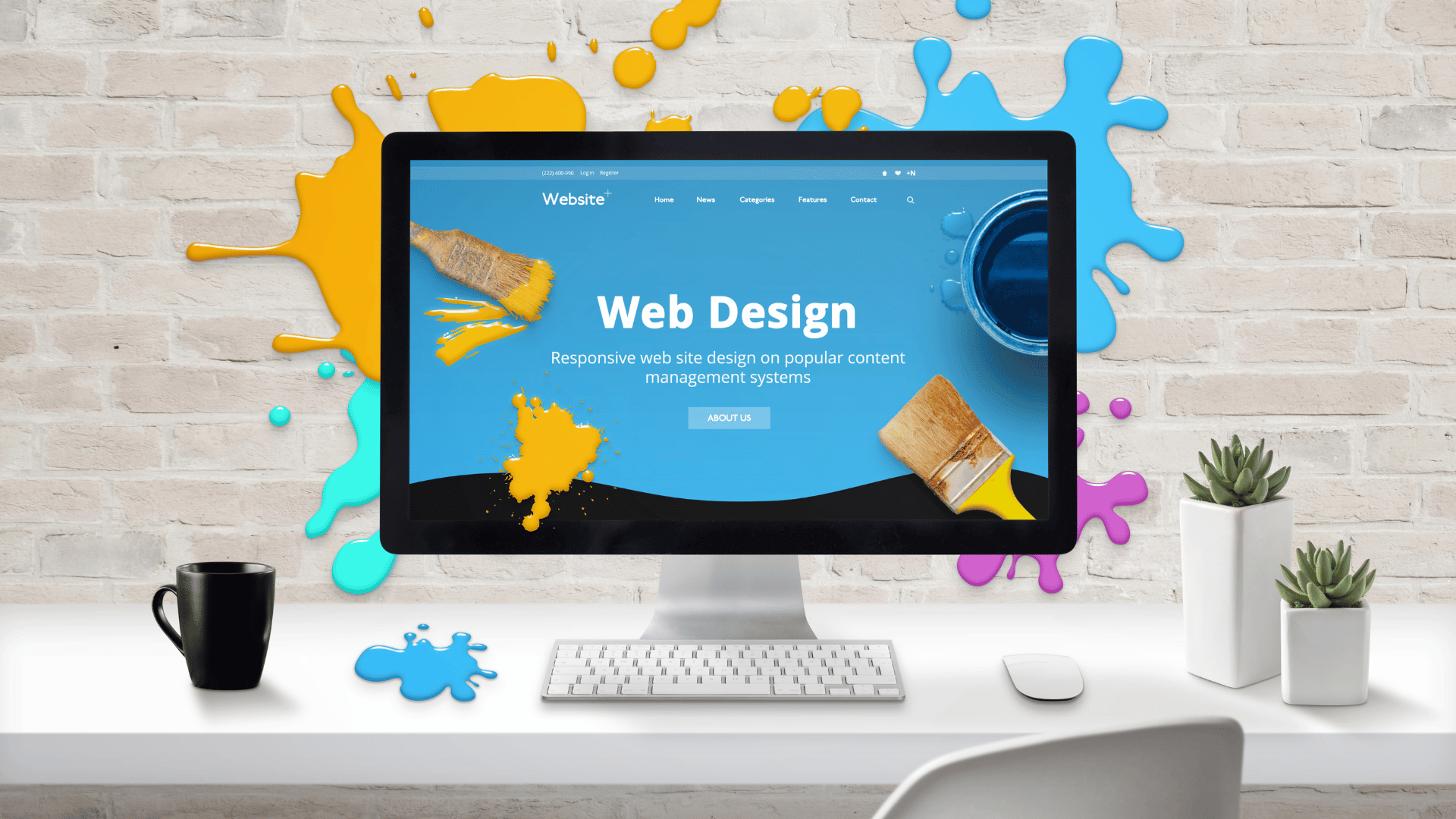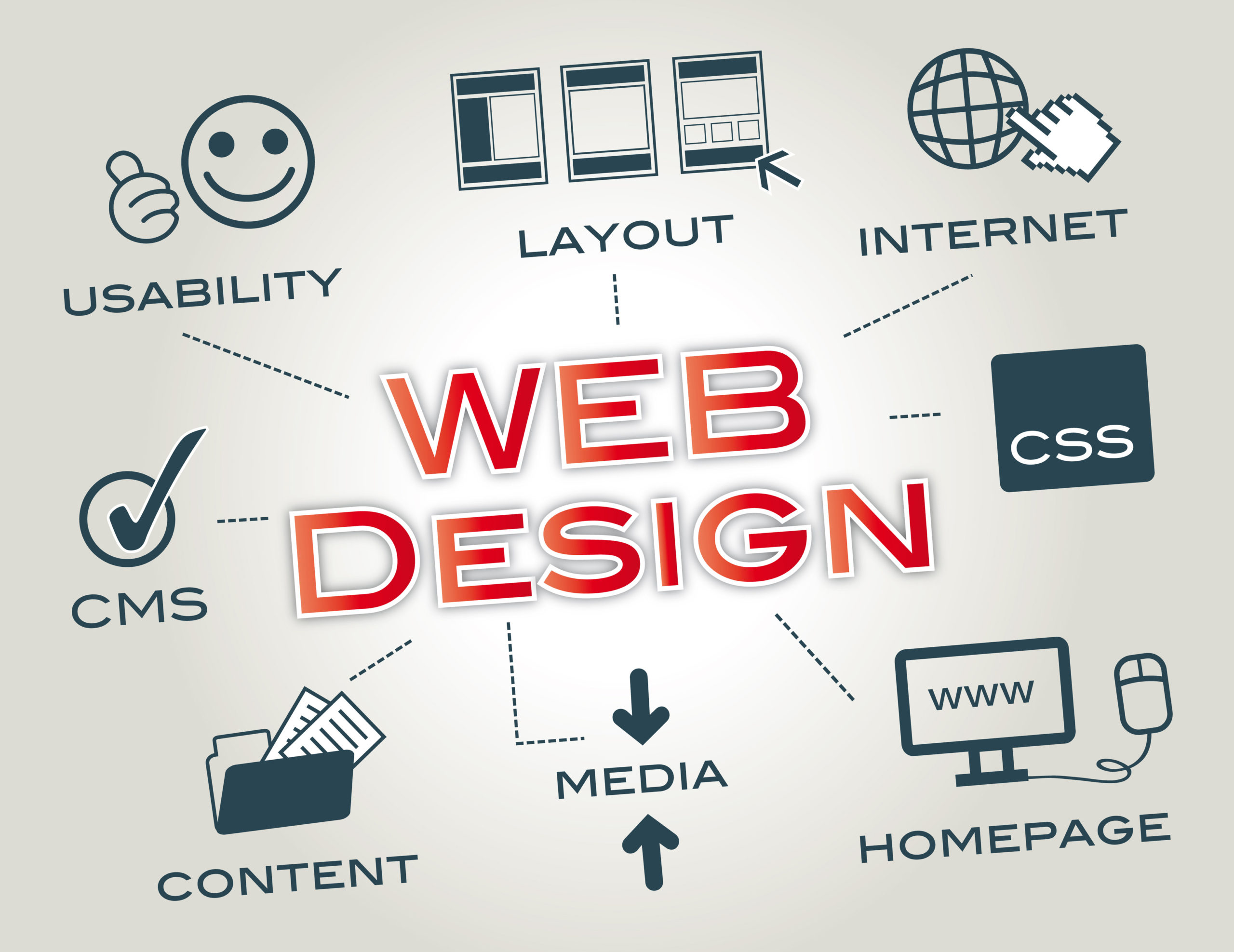Expert insights on creating engaging visuals from an agency for web design
Exploring Imaginative Trends in Web Design for Modern Businesses
The landscape of web design is continuously evolving, reflecting the dynamic requirements of contemporary businesses. Current trends highlight a preference for minimalism, bold typography, and appealing interactivity. Firms significantly focus on user experience with mobile-first concepts and customized material. Additionally, a concentrate on sustainability is obtaining traction. Comprehending these trends is essential for businesses intending to stand apart in a jampacked market. What ramifications do these changes hold for the future of digital engagement?
Embracing Bold Typography
Strong typography has actually become a defining element in contemporary web design, capturing interest and conveying messages with striking clarity. This pattern prioritizes visually impactful message that enhances user engagement and brand identification. Developers usually use large fonts and special fonts to develop a hierarchy, directing customers with material effortlessly.
The critical use strong typography permits for effective narration, allowing brands to communicate their values succinctly. It serves not just aesthetic purposes however additionally functional ones, as it improves readability throughout devices and display sizes.
As internet sites complete for user interest, bold typography stands out in a saturated electronic landscape. Its adaptability allows developers to trying out contrasting colors and designs, even more intensifying its performance. Eventually, accepting bold typography stands for a shift towards even more communicative and expressive web design, cultivating a much deeper link between brands and their target markets.
The Rise of Minimalist Design
As digital atmospheres end up being increasingly messy, the surge of minimalist design uses an invigorating choice that prioritizes simplicity and performance. This layout approach remove unneeded components, enabling web content to take facility phase. By focusing on tidy lines, adequate white area, and a limited shade palette, minimalist design improves user experience and enhances navigating.
Services embracing this pattern goal to share their brand name message plainly and effectively, fostering a feeling of calmness and quality. The lack of diversions aids customers concentrate on crucial details, resulting in improved interaction and conversion prices. Furthermore, minimalist layout lines up well with mobile-first techniques, making sure that sites remain easy to use and available across different tools.
Eventually, the increase of minimal style reflects a more comprehensive shift in the direction of focusing on user requirements and choices, making it a powerful device for contemporary businesses aiming to make a long lasting impact in the digital landscape.
Immersive Animations and Interactivity
While numerous web designers accept minimal aesthetics, an additional compelling pattern acquiring grip is the use of immersive computer animations and interactivity. This approach boosts user involvement by creating fascinating experiences that draw site visitors right into the content. Designers use vibrant elements such as computer animated histories, scrolling impacts, and interactive infographics to communicate complex concepts in an easily accessible fashion.
These computer animations not only provide aesthetic passion however also guide individuals through the navigation process, making communications extra user-friendly. For instance, hover impacts and animated shifts can motivate users to discover further, leading to boosted time spent on the website.
Additionally, this trend straightens with the more comprehensive movement towards storytelling in web design, where computer animations act as narrative gadgets that share brand name messages effectively. By incorporating immersive computer animations and interactivity, businesses can distinguish themselves in a crowded online landscape, inevitably enhancing user fulfillment and brand commitment.
Mobile-First Style Principles
Mobile-first layout concepts emphasize focusing on user experience by ensuring web sites work perfectly on smaller displays. This technique incorporates responsive layout methods that adjust to various gadget sizes while maintaining aesthetic integrity. Additionally, it concentrates on touchscreen navigation layout, boosting use for mobile customers.
Prioritizing User Experience
Exactly how can developers efficiently focus on user experience in a progressively mobile-centric world? Highlighting mobile-first style principles is vital, as individuals largely engage with internet sites via mobile phones. This strategy encourages developers to streamline web content, guaranteeing it is conveniently obtainable and accessible on smaller screens. Secret methods include streamlining navigation, lessening tons times, and using touch-friendly elements that improve interactivity. Additionally, focusing on readable typography and intuitive designs can substantially improve user satisfaction. Designers should continually collect user feedback to refine their strategies, adjusting to evolving user requirements and preferences. By concentrating on these aspects, businesses can create an engaging electronic experience that cultivates commitment and drives conversions, ultimately lining up with the expectations these days's mobile individuals.
Responsive Design Strategies
Developers accept responsive design methods to create flexible and flexible web experiences that provide wikipedia reference to different display dimensions. This approach focuses on mobile-first style concepts, ensuring peak performance on smaller tools before scaling up for bigger screens. By using liquid grids, flexible photos, and media inquiries, designers can preserve a natural aesthetic identity across all systems. This technique not just improves user interaction however also boosts internet search engine positions, as mobile-friendly sites are preferred by search formulas. In addition, receptive layouts permit services to get to a wider target market, accommodating customers on smartphones, tablet computers, and desktops alike. Generally, carrying out these methods is necessary for contemporary web design, ensuring that businesses stay competitive in an ever-evolving digital landscape.
Touchscreen Navigation Design
With the surge of smart phones, touchscreen navigating has become a basic aspect of web design. Designers are increasingly embracing mobile-first principles to enhance user experience and involvement. Web Design Agency. Reliable touchscreen navigating prioritizes larger buttons and instinctive motions, enabling customers to communicate quickly with web content. This method decreases stress and motivates exploration, as users can browse perfectly with their fingers. In addition, integrating navigate to this website swipe motions and tap performance accommodates the all-natural actions of mobile users. Responses mechanisms, such as visual hints and animations, boost usability additionally by confirming activities. As touchscreens dominate user interactions, utilizing these style aspects not just lines up with modern-day expectations yet additionally promotes a much more enjoyable and easily accessible surfing experience for all users
Individualized User Experiences
What makes an individual feel truly engaged on a web site? The response frequently lies in individualized user experiences. By tailoring material and navigation to private choices, businesses can produce a purposeful link with their target market. This personalization can be accomplished through different approaches, such as analyzing user behavior, using cookies, and offering tailored referrals based upon previous communications.
As an example, ecommerce platforms that recommend products based upon searching history not just enhance user experience however likewise enhance conversion rates. Incorporating dynamic material that adjusts to the user's location or time of day can even more improve involvement.
In addition, tailored greetings or messages can make users feel valued and recognized. As contemporary businesses seek to stand apart in an affordable digital landscape, accepting personalized user experiences becomes crucial, promoting commitment and encouraging repeat brows through. Eventually, this method transforms a common internet site into an interactive system that resonates with its audience.
Sustainability in Web Design
As the electronic landscape proceeds to evolve, the value of sustainability in web design has actually gained significant attention. Developers are increasingly knowledgeable about the ecological influence their developments can have, motivating a shift towards environmentally friendly practices (Web Design services). Lasting web design focuses on enhancing web sites to decrease power intake and carbon impacts. Strategies consist of using minimalistic layout concepts, maximizing images, and using effective coding techniques to boost loading speeds
The choice of hosting providers plays a necessary role; several designers are currently choosing for eco-friendly holding solutions powered by eco-friendly power. By prioritizing accessibility and straightforward navigating, lasting designs likewise accommodate a wider target market, improving use. This conscious approach not only charms to environmentally-minded customers but additionally adds to the total longevity and effectiveness of sites. Inevitably, sustainability in web design shows an expanding trend towards accountable digital methods that line up with modern-day service values.

Regularly Asked Inquiries
Exactly How Can I Choose the Right Color System for My Internet site?
To choose the appropriate color system for an internet site, one must take into consideration the brand name's identity, target market, and emotional influence. Using shade concept and testing mixes can enhance user experience and visual appeal considerably.
What Are the most effective Devices for Prototyping Internet Styles?
The finest devices for prototyping website design include Figma, Map out, Adobe XD, and InVision. These platforms offer intuitive user interfaces, partnership functions, and considerable libraries, making them ideal for developers to create and refine their concepts effectively.
Just how Do I Measure the Performance of My Web Design?
To determine web design efficiency, one must assess user interaction metrics, conversion prices, and functionality responses (Web Design recommended you read services). A/B screening and heatmaps can likewise give understandings into user actions, guiding necessary adjustments for enhanced performance and user experience
What Prevail Web Design Errors to Prevent?
Typical web design errors include cluttered designs, poor navigation, slow-moving packing times, absence of mobile optimization, poor comparison, and ignoring user feedback. Preventing these pitfalls improves user experience and enhances general effectiveness of the website.
Exactly how Often Should I Update My Web Site Design?
A site layout should be upgraded every 2 to three years, or faster if considerable changes in branding or technology happen. Regular updates keep the website fresh, practical, and straightened with present user expectations.
